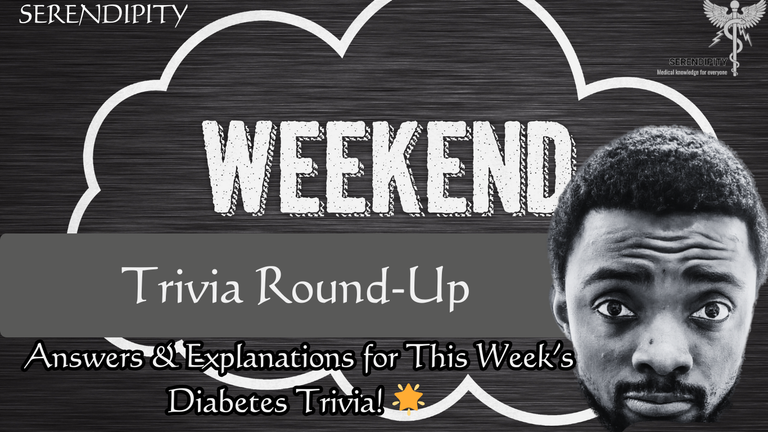
Thank you to everyone who participated in the Hive Medical trivia this week. You are the reason I keep doing it every week.
Let’s dive into the answers to the questions and explore the reasoning behind them. Ready? Here we go!
Friday
Question: Which hormone counteracts the effect of insulin by raising blood glucose?
Options:
A) Glucagon
B) Oxytocin
C) Aldosterone
D) Estrogen
Answer: A) Glucagon
Explanation: Glucagon is a hormone that is produced by a different group of cells in the pancreas called the alpha cells, It plays the opposite role of insulin. While insulin lowers blood glucose, glucagon raises it by signalling the liver to release stored glucose (glycogen) into the bloodstream.
Insulin and Glucagon are the Ying and Yang of glucose metabolism! Oxytocin and aldosterone have no role in glucose metabolism, and estrogen primarily impacts reproductive health.
Thursday
Question: A patient with Type 1 diabetes and nausea has blood glucose of 4 mmol/L. What’s the next step?
Options:
A) Give insulin
B) Drink juice
C) Take metformin
D) Skip a meal
Answer: B) Drink juice
Explanation: A blood glucose of 4 mmol/L is on the low end, and nausea could lead to hypoglycemia if not addressed. Drinking juice provides a quick source of sugar to raise blood glucose levels safely. Giving insulin (A) would lower glucose further, which is risky. Metformin (C) is for Type 2 diabetes, and skipping a meal (D) could exacerbate hypoglycemia.
Wednesday
Question: A diabetic with recent weight gain has fasting glucose of 6.8 mmol/L. Diagnosis?
Options:
A) Normal glucose
B) Pre-diabetes
C) Type 1 DM
D) Gestational diabetes
Answer: B) Pre-diabetes
Explanation: A fasting glucose of 6.8 mmol/L falls into the "pre-diabetes" range (5.6–6.9 mmol/L). This indicates impaired glucose regulation, often a precursor to Type 2 diabetes. Normal glucose (A) is below 5.6 mmol/L, and Type 1 DM (C) typically presents with weight loss and hyperglycemia. Gestational diabetes (D) occurs only during pregnancy.
Tuesday
Question: A patient with diabetes develops red, warm skin on the lower leg with pain. Likely cause?
Options:
A) Cellulitis
B) Charcot foot
C) Neuropathy
D) Vascular disease
Answer: A) Cellulitis
Explanation: Redness, warmth, and pain in the lower leg are classic signs of cellulitis, a bacterial skin infection. Diabetics are more prone due to immune system changes and poor circulation. Charcot foot (B) presents with deformities and swelling but is less likely to cause redness and pain acutely. Neuropathy (C) usually causes numbness, not redness or warmth. Vascular disease (D) leads to poor circulation and wounds but lacks the infection-like redness and warmth.
Monday
Question: A 55-year-old with diabetes reports numbness in feet, but no foot pain. What complication is likely?
Options:
A) Peripheral artery disease
B) Diabetic neuropathy
C) Charcot foot
D) Cellulitis
Answer: B) Diabetic neuropathy
Explanation: Numbness in the feet without pain is a hallmark of diabetic neuropathy, a common complication of long-term diabetes caused by nerve damage. Peripheral artery disease (A) causes poor circulation but usually presents with leg pain during activity (claudication). Charcot foot (C) involves deformity and swelling. Cellulitis (D) is an infection that causes pain and redness, not numbness.
That’s a wrap for this week! 🎉
How did you do? Whether you aced it or learned something new, each question is a step towards mastering diabetes care. Stay tuned for more trivia, and keep learning—it’s the best medicine (along with insulin, sometimes)! 😊
